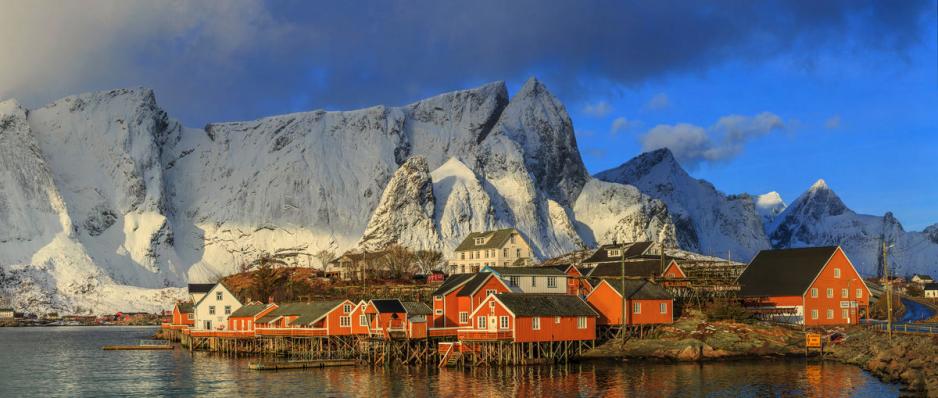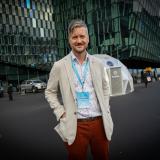Commentary Alaska’s and North Norway’s need for a holistic blue economy

Alaska and North Norway share similar characteristics, particularly regarding the regions' economic dependence on maritime industries and their potential for blue economy development. (Photo: AlaskaNor)
This is an opinion piece written by external contributors. All views expressed are the writer's own.
Efforts at economic development in ocean and coastal regions are more and more taking place within an evolving concept called the ‘blue economy’ – an economy that embraces all ocean-dependent activities. Basically, blue economy means connecting economic uses of the ocean with sustainable ecosystems and environmental conditions to the benefit not at least of local communities.
In Alaska, the blue economy has recently been praised as the future of the State's economic stability. Like Norway, Alaska’s access to the oceans is unparalleled in the United States and home to one of the world’s leading global ocean industries. Alaskan fishermen, for example, provide nearly two-thirds of the nation’s annual seafood harvest. If Alaska’s ocean industry were proportional to the size of its available ocean, it would be worth nearly $100 billion — more than twice the state’s current overall economic value. Thus, the transition from simple resource extraction and exportation to diversification and sustainable development of the oceans holds tremendous potential for Alaska’s future economic stability.
Also, Norwegian decision-makers have been much engaged in optimising benefits received from the economic development of marine environments such as fisheries and other offshore production activities. With almost 70% of the Norwegian export revenues coming from sea-based economic activities and resources, a holistic and sustainable Arctic blue economy is of vital importance for Norway. It is worth noticing that about 80% of these maritime areas are in the northern part of Norway, connected to Nordland, Troms and Finnmark county, as well as around the archipelago of Svalbard. To be sure that these resources are developed in the best economic and sustainable way, we need knowledge. The High North Center for Business and Governance at Nord University in Bodø has been a frontier in developing knowledge about the potential in the blue economy. The recent establishment of the Centre for the Ocean and the Arctic, located in Tromsø, is further strengthening the focus on knowledge about the blue economy.
Because of the increasing importance of the blue economy, we need to design an economic model where the potential of this economy is much more explicitly taking into account, compared to the models we use today. As a starting point we need to:
- Develop a working definition of the blue economy which can provide both clear goals and allows for means of assessing progress in achieving those goals
- Develop a set of strategies that guide program and policy decisions over time

From the project meeting in Anchorage in November 2018. AlaskaNor
Local and traditional knowledge in addition to increased collaboration with existing ocean industries is key to not only develop a working definition of an Arctic blue economy but essentially to create a set of policy strategies that guide decisions for a sustainable future. A three-year project at the High North Center for Business and Governance has been set to pinpoint these core themes, aiming to provide ‘blue answers’ for two similar, yet distant Arctic regions: Alaska and North Norway. The AlaskaNor project aims to improve knowledge-sharing concerning the blue economy potential in the two Arctic regions.
Both, Alaska and North Norway share similar characteristics, particularly regarding the regions' economic dependence on maritime industries and their potential for blue economy development. However, no knowledge has been shared yet concerning the opportunities for both regions to mutually tackle the manifold challenges of regionally developing their blue economy.
"Alaska's economy is primarily based on oil revenues to the tune of 85% of Alaska's state budget. Looking at growth opportunities in the blue economy would not only be great for Alaska but also for Alaska and North Norway relations. I see a lot of similarities between Alaska and North Norway and am excited about this study and partnership potential," says Lise Kristiansen Falskow, the Norwegian Honorary Consul in Alaska.
AlaskaNor will not only enhance knowledge on among relevant stakeholders and amongst decisions-makers, it essentially targets to bring the two regions closer together, setting the path for future collaboration between businesses on both sides of the Arctic Ocean.
AlaskaNor is coordinated by the High North Center for Business and Governance at Nord University in Bodø, Norway. It is funded by the Norwegian Ministry of Foreign Affairs and Nordland County and runs from September 2018 to July 2021. For more information, see www.alaskanor.com.
Frode Mellemvik is the Director of the High North Center for Business and Governance.
Andreas Raspotnik is a Senior Researcher at the High North Center for Business and Governance and Project Leader of AlaskaNor.


